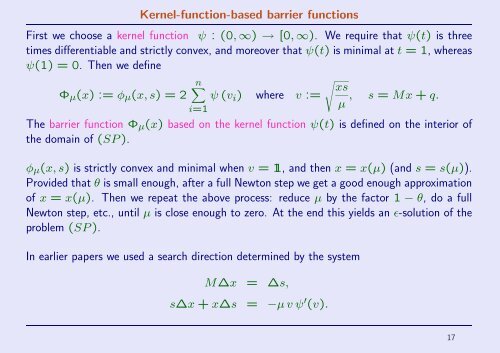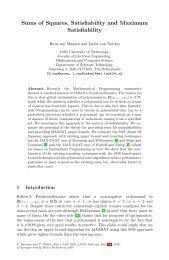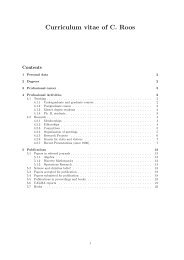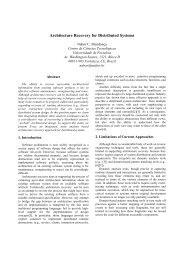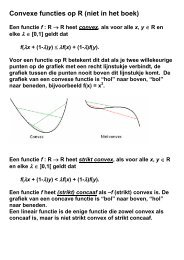Full-Newton step polynomial-time methods for LO based on locally ...
Full-Newton step polynomial-time methods for LO based on locally ...
Full-Newton step polynomial-time methods for LO based on locally ...
Create successful ePaper yourself
Turn your PDF publications into a flip-book with our unique Google optimized e-Paper software.
Kernel-functi<strong>on</strong>-<str<strong>on</strong>g>based</str<strong>on</strong>g> barrier functi<strong>on</strong>sFirst we choose a kernel functi<strong>on</strong> ψ : (0, ∞) → [0, ∞). We require that ψ(t) is three<str<strong>on</strong>g>time</str<strong>on</strong>g>s differentiable and strictly c<strong>on</strong>vex, and moreover that ψ(t) is minimal at t = 1, whereasψ(1) = 0. Then we define√ n∑xsΦ µ (x) := φ µ (x, s) = 2 ψ (v i ) where v := , s = Mx + q.µi=1The barrier functi<strong>on</strong> Φ µ (x) <str<strong>on</strong>g>based</str<strong>on</strong>g> <strong>on</strong> the kernel functi<strong>on</strong> ψ(t) is defined <strong>on</strong> the interior ofthe domain of (SP).φ µ (x, s) is strictly c<strong>on</strong>vex and minimal when v = 1, and then x = x(µ) (and s = s(µ)).Provided that θ is small enough, after a full <str<strong>on</strong>g>Newt<strong>on</strong></str<strong>on</strong>g> <str<strong>on</strong>g>step</str<strong>on</strong>g> we get a good enough approximati<strong>on</strong>of x = x(µ). Then we repeat the above process: reduce µ by the factor 1 − θ, do a full<str<strong>on</strong>g>Newt<strong>on</strong></str<strong>on</strong>g> <str<strong>on</strong>g>step</str<strong>on</strong>g>, etc., until µ is close enough to zero. At the end this yields an ǫ-soluti<strong>on</strong> of theproblem (SP).In earlier papers we used a search directi<strong>on</strong> determined by the systemM∆x = ∆s,s∆x + x∆s = −µ v ψ ′ (v).17


